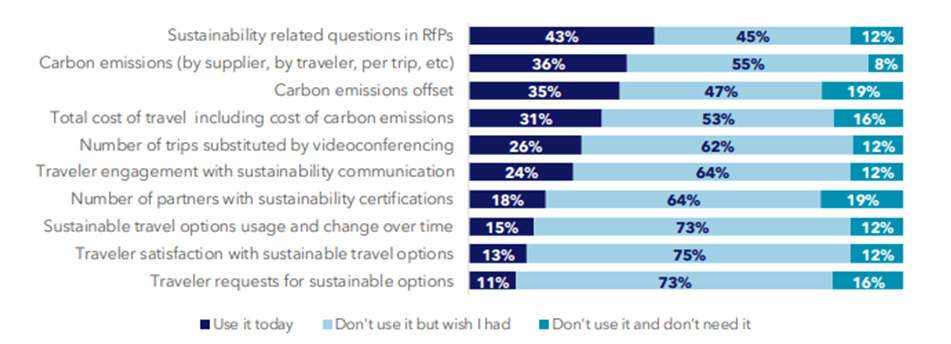There is no denying how the global environment improved when the world went into lockdown in 2020, which is why Covid-19 has taken sustainable business travel practices from being an important consideration to an essential one.
Interestingly, aviation’s contribution to climate change – 3.5% of warming, or 2.5% of CO2 emissions – is less than one would think. Be that as it may, we all have a part to play in supporting sustainability. According to a BCD Travel buyer survey conducted in April 2021, 44% of travel buyers have science-based sustainability targets committing to reduce carbon emissions in the following decades. So, what can a company do if they truly want to make an impact?
How do I reduce carbon emissions?
Essentially, it’s up to each company to decide what makes them carbon neutral. For example, one company might only consider CO2 emissions and not all greenhouse gasses in their definition. The first step is realising that CO2 compensation cannot be the priority in a sustainable strategy. It’s essential to make other changes first to create a holistic approach:
- Limit travel – Support essential trips that are several days long
- Travel Less – Provide guidance on how to replace short trips with virtual meetings
- Travel Better – Include ” stay or go” guidelines for sustainable options in the decision-making process
- Use Sustainable Suppliers – Integrate sustainability messaging into your employee communication strategy.
Limit travel to essential trips that are several days long
Until petroleum-based aviation fuel is replaced, you should avoid flying when possible, fly less frequently, fly shorter distances, and fly economy class. Limiting travel to essential trips that are several days long or combining several trips into one will minimise your traveller’s risk and fulfilling your duty of care requirements while also helping to reduce emissions and increase productivity.
Travel Less – Provide guidance on how to replace short trips with virtual meetings
Short trips and internal travel are the most easily replaced by virtual tools. In your policy, detail the available communications tools and provide relevant links to access them as well as any training materials that may be available.
Travel better – Include ” stay or go” guidelines for sustainable options in the decision-making process
The biggest challenge to developing a sustainable travel program is traveller education. Include a “stay or go” decision tree in the policy and ensure that the logic permeates all facets of the guidelines. Consider reinforcing this tactic with some statistics throughout the year. Communicate with relatable numbers, like “If we reduce travel by X%, we could save RRR in carbon emissions and X time spent on the road.”
Use Sustainable Suppliers – Integrate sustainability messaging into your employee communication strategy
When sourcing a managed travel program or booking business travel, it helps to be aware of suppliers’ sustainability initiatives. Many airlines have successfully implemented eco-friendly initiatives, including buying more efficient aircraft, investing in alternative fuel, improving on-board sustainability, etc. For example, since 2013, American Airlines has invested $24 billion in new, more fuel-efficient aircraft, building the youngest fleet among all U.S. network carriers. Similarly, Airbus has announced plans to have the first zero-emission aircraft by 2035, using hydrogen fuel cells.
Integrating sustainability messaging into your employee engagement strategy is the best way to give travellers the information they need at the right time in the decisions making process. Consider creating assets to communicate messaging like: If you need to fly, choose a newer aircraft, and fly directly instead of connecting. Newer aircraft burn significantly lower fuel (look for Boeing 787, Airbus 321 NEO or the Airbus 350), and so do direct flights. Choosing both will reduce your carbon impact.
How do I offset residual emissions?
While offsetting is the cornerstone of most companies’ strategies, it should be counted separately from their efforts to reduce emissions. By focusing on emissions decreases, it is possible to distinguish those organisations making a real difference from those claiming carbon neutrality based on a carefully selected set of criteria. That said, before you can offset your CO2 contribution, you need to know what they are. We start with the most robust data collected from multiple sources to produce a holistic view of clients’ travel spend and traveller consumption. Below are the metrics most clients use to measure travel sustainability.





